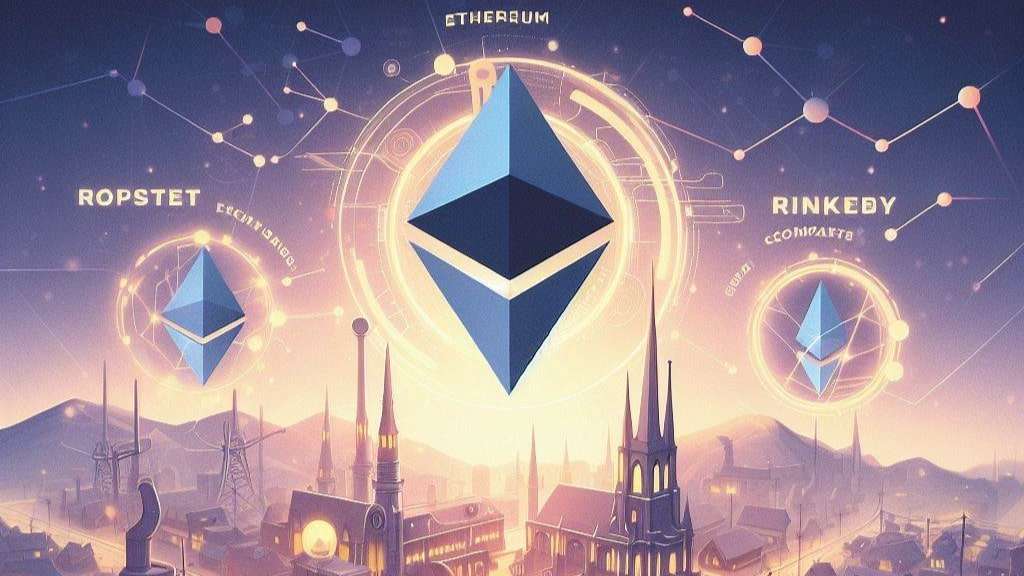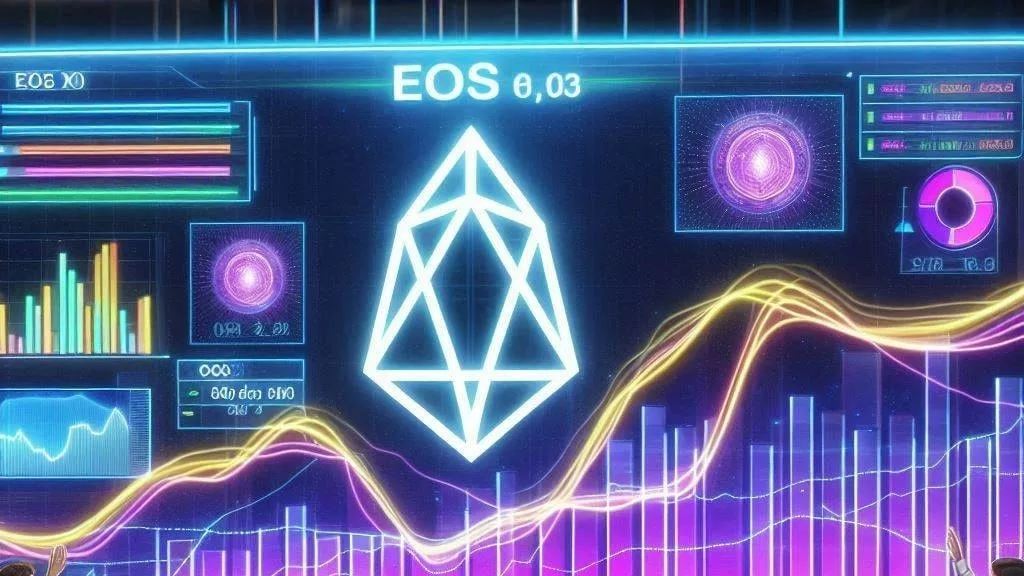Ethereum, a leading blockchain platform, has paved the way for decentralized applications (dApps) and smart contracts. While Ethereum’s mainnet is powerful, it’s not the ideal environment for testing new dApps and smart contracts before deploying them. Enter Ethereum testnets, such as Ropsten and Rinkeby, which provide a safe and sandboxed space for experimentation. In this article, we’ll delve into Ethereum testnets, their significance, and how developers can leverage them.
What Are Ethereum Testnets and Why Are They Useful?
Ethereum testnets are parallel blockchains that mimic the Ethereum mainnet’s technology and rules. However, they are isolated environments designed exclusively for development and testing purposes. These testnets offer several advantages:
- Experimentation: Developers can create and test dApps and smart contracts without the fear of causing real financial losses or irreversible changes to the mainnet blockchain. Mistakes made on testnets have no real-world consequences.
- Access to Free Test Ether: Testnets provide their own native cryptocurrencies separate from real Ether. These test Ether tokens enable application testing without requiring real money.
- Replication of Mainnet Functionality: Testnets closely resemble the Ethereum mainnet in terms of block creation times, consensus mechanisms, and more. This provides a realistic environment for testing how dApps will perform on the live mainnet.
- Community Participation: Testnets foster open collaboration as developers work together to test implementations and identify bugs or vulnerabilities before deploying to the mainnet.
Introducing Ropsten – The Proof of Work Testnet
Ropsten is one of Ethereum’s oldest and most active testnets. Launched in 2016, it was among the first Ethereum testnets to employ a Proof of Work consensus model for a test environment. Here are some key attributes of Ropsten:
- Consensus: Ropsten uses Proof of Work mining with reduced difficulty and hash rate compared to the mainnet, making mining participation easier.
- Ether Supply: Ropsten Ether has no real monetary value and comes with an unlimited supply. Users can request test Ether through a faucet.
- Speed: Ropsten boasts faster block times, averaging around 15-30 seconds, compared to 10-19 seconds on the mainnet.
- Network IDs: Ropsten employs Network ID 3, while the mainnet uses Network ID 1 to prevent cross-chain confusion.
- Community: Ropsten may have fewer nodes, but it maintains a dedicated community of miners, developers, and users focused on testing.
- Lifespan: As a Proof of Work network, some blocks become unusable over time. Ropsten undergoes periodic resets and patches to remain functional.
Ropsten offers developers a robust environment for testing contracts and applications under realistic network conditions before deploying them to the mainnet. Over 1000 dApps have undergone testing on Ropsten, demonstrating its significance in the Ethereum ecosystem.
Diving Into Rinkeby – The Proof of Authority Testnet
Launched in 2017, Rinkeby introduced the concept of using Proof of Authority for an Ethereum testnet. Rinkeby shares many benefits with Ropsten but offers some unique features:
- Consensus: Rinkeby employs Proof of Authority, where pre-approved validators validate blocks instead of mining. This enhances security and resistance to attacks.
- Speed: Rinkeby’s block times average 15 seconds, matching Ropsten and outpacing the mainnet.
- Ether Supply: Like Ropsten, Rinkeby’s Ether has no real value and no supply cap. Users can obtain test Ether through a faucet system.
- Functionality: Rinkeby aims to replicate mainnet functionality but scaled down for testing with faster blocks and fewer nodes. However, it does not support uncle blocks.
- Accessibility: Rinkeby has improved the availability of test Ether to ensure ease of development.
- Lifespan: Rinkeby’s Proof of Authority model provides greater sustainability, as blocks remain accessible indefinitely.
For developers seeking uptime, consistency, sustainability, and ample test Ether access, Rinkeby stands out as an excellent choice for testing environments.
Key Considerations When Using Testnets
While Ethereum testnets offer excellent sandboxes for stress-testing dApps under realistic conditions, developers should keep the following considerations in mind:
- Mainnet Migration: After successful testnet trials, it’s crucial to test proper mainnet migration strategies. Debugging production issues at scale presents new challenges.
- Speed vs. Scale: Faster testnet block times can help identify bugs more quickly but may not replicate the size and complexity of the live Ethereum network at scale.
- Testnet Incentives: Some behaviors, like gas optimization, may differ on testnets due to lower profit incentives.
- Test Ether Management: Properly budget and manage test Ether to avoid running out during testing. Rinkeby offers improved faucet access to address this concern.
- Functionality Gaps: Minor technical differences in testnet capabilities, APIs, etc., may impact testing.
- Security: While testnets are isolated from the mainnet, developers should still take care to avoid introducing vulnerabilities that could extend to the mainnet.
Leveraging Testnets for Confident Mainnet Launches
As an Ethereum developer, the question often arises: “Is my dApp truly ready for the mainnet?” After extensive development and refinement in staging environments, testnets provide that final layer of confidence needed before deploying to the mainnet. Embracing experimentation on testnets allows developers to learn valuable lessons on Ropsten or Rinkeby. While humbling at times, the freedom to fail fosters the creation of innovative dApps that offer genuine utility to users. Ethereum’s testnets play a pivotal role in making the deployment of high-quality Ethereum dApps possible.
Here are some top tips for utilizing testnets, drawn from years of firsthand experience:
- Start Testing Early: Begin testing with a minimum viable product to enable rapid iteration and learning.
- Leverage Ropsten and Rinkeby: Use multiple test networks to gain different perspectives under various conditions.
- Incorporate Stress Testing: Conduct extensive stress testing during testnet trials.
- Encourage Collaboration: Invite external developers to collaborate and offer bug bounties on testnets.
- Improve Documentation: Use testnets as an opportunity to enhance documentation for both developers and users.
- Set Defined Milestones: Establish testing milestones and criteria to objectively assess readiness for the mainnet.
- Plan Gradual Mainnet Release: Consider a gradual scaled release on the mainnet to ramp up to full production.
Strategic and thorough testnet testing empowers developers to launch on the Ethereum mainnet with the confidence needed to succeed and make a lasting impact.
How Can I Get Involved with Ethereum Testnets as a Developer?
For developers eager to gain hands-on experience with Ethereum testnets, getting started is straightforward:
- Request Test Ether: Obtain test Ether from faucets such as the Ropsten Ether Faucet or Rinkeby Faucet to initiate dApp and smart contract testing.
- Set Up a Development Testnode: Create a development testnode on a private local network using tools like Geth, Ganache, or OpenEthereum.
- Join Testnet Communities: Participate in testnet communities by joining Ethereum developer forums or testnet mining/staking pools.
- Contribute: Contribute to ongoing testnet development by submitting bug reports and improvements.
- Build Tools: Develop tools that enhance the testnet experience for fellow developers.
- Publish Writeups: Share detailed writeups reviewing your experiences with different testnets.
Stay engaged in Ethereum’s testnet ecosystems to gain valuable experience, support ongoing testing efforts, and be part of a dynamic community. Testnets offer a stimulating sandbox where learning opportunities and impact potential are boundless.
How Do Ethereum Testnets Compare to Other Blockchain Testnets?
As blockchain adoption continues to grow, more platforms recognize the importance of testnets for developer experimentation. Let’s briefly compare Ethereum’s testnets with those of other prominent blockchains:
- Bitcoin Testnet: Bitcoin’s testnet closely mirrors mainnet functionality but features distinct network IDs and testnet coins. It pioneered the concept of testnets.
- Polkadot Testnet: Polkadot offers a single persistent testnet called Westend, featuring community governance and bug hunting incentives.
- Solana Testnet: Solana maintains several testnets, such as Devnet, Testnet, and Tour de SOL, replicating mainnet performance and pricing.
- Cardano Testnet: Cardano provides mutable testnets, including PreProd for short-term testing and ITN for ongoing long-term trials.
- Polygon Testnets: Polygon developers can choose from testnets like Mumbai for Plasma chains or Bombay for PoS networks.
While most major blockchains offer similar development sandboxes through their testnets, variations in consensus models, network architectures, fees, faucets, and governance create distinct testing environments for each blockchain. Developers are encouraged to explore multiple testnets to determine which best aligns with their dApp testing requirements.
How Can Blockchain Testnets Achieve Closer Parity with Mainnets?
As Ethereum transitions to a proof-of-stake model with Eth2, there is an opportunity to enhance testnets for closer parity with mainnet performance and capabilities. Some potential improvements include:
- Incorporating Staking Functionality: Integrate staking functionality into testnets to mirror the economic incentives and behaviors of mainnet validation.
- Supporting Shard Chains and Layer 2 Solutions: Expand testnets to support shard chains and layer 2 solutions deployed on the mainnet.
- Improving Tooling: Enhance tooling, including block explorers, debugging capabilities, and metrics dashboards tailored for testnet development.
- Enabling Testnet Experimentation: Allow testnet experimentation with economic abstractions like stablecoins, NFTs, tokens, etc.
- Enhancing Testnet Documentation: Improve testnet documentation to onboard more developers effectively.
- Funding Testnet Development Initiatives: Explore funding options, such as crowdfunding or foundation backing, to support testnet development.
- Learning from Alternate Devnets: Study Ethereum core developer practices on alternate devnets and apply learnings to public testnets.
- Temporary Connections: Allow controlled, temporary connections between testnets and the mainnet to facilitate better testing of mainnet migrations.
Evolving to meet the changing needs of Ethereum developers will be crucial. By proactively enhancing testnet utility, functionality, and longevity, Ethereum can maintain its reputation as the top blockchain for decentralized development.
In Conclusion
Ethereum testnets, particularly Ropsten and Rinkeby, are indispensable tools for developers seeking to create and deploy high-quality dApps and smart contracts. These testnets provide a safe and realistic environment for experimentation, collaboration, and learning. As the blockchain landscape evolves, testnets will continue to play a pivotal role in ensuring the success and security of blockchain applications.
Developers, both seasoned and aspiring, are encouraged to immerse themselves in Ethereum’s testnet ecosystems, contribute to their development, and leverage these platforms to hone their skills. With Ethereum testnets as their playground, developers can push the boundaries of innovation and bring forth blockchain applications that benefit users worldwide.
Post Views: 2,791


